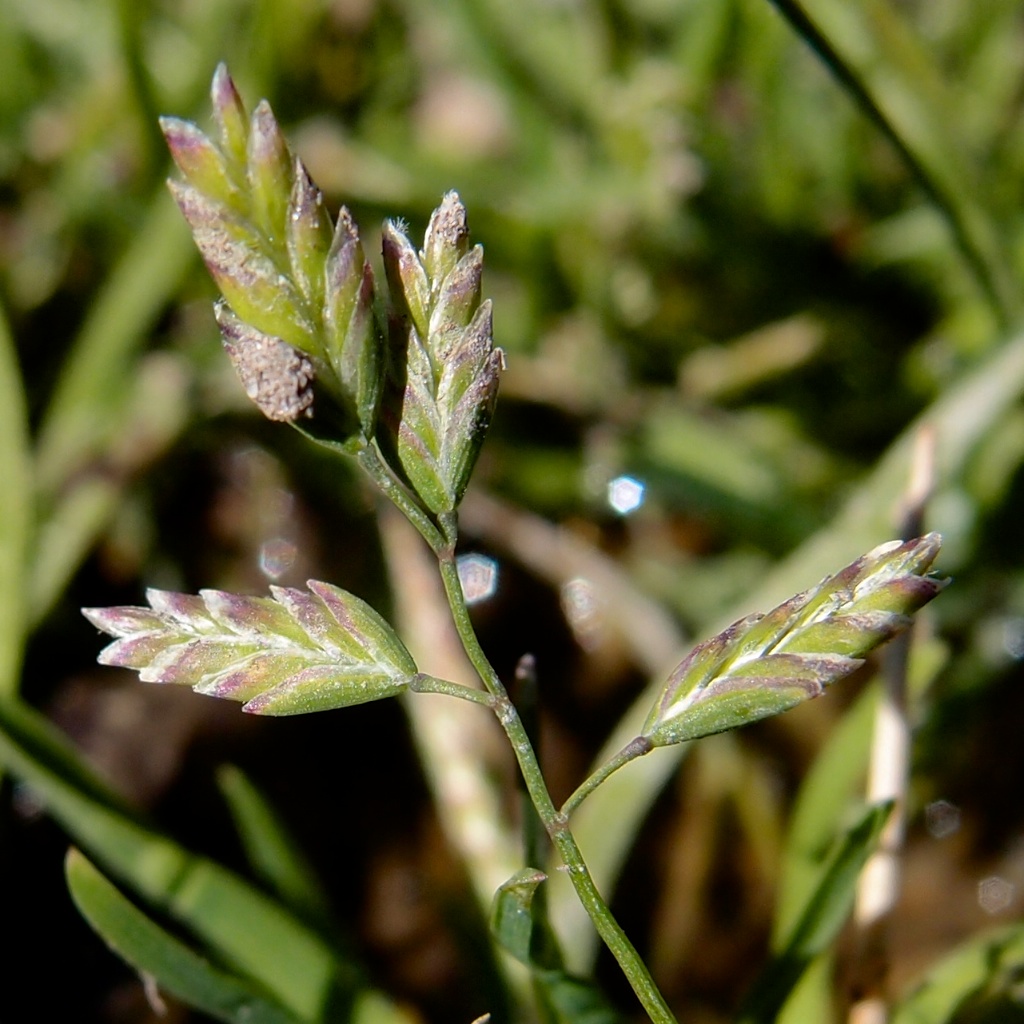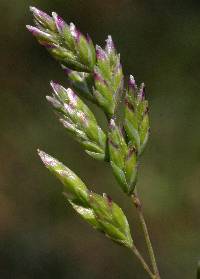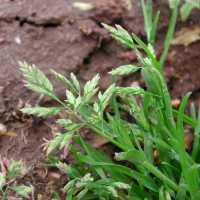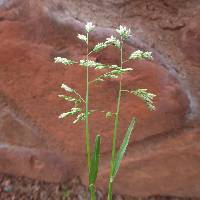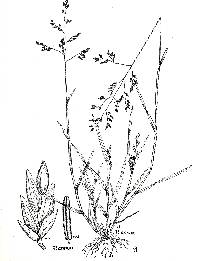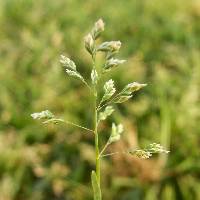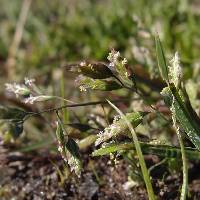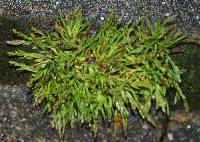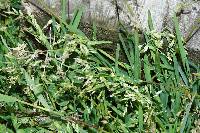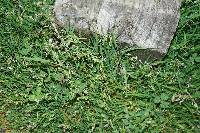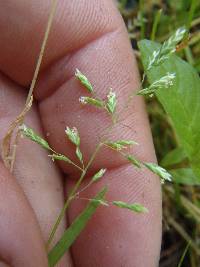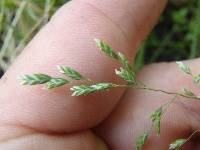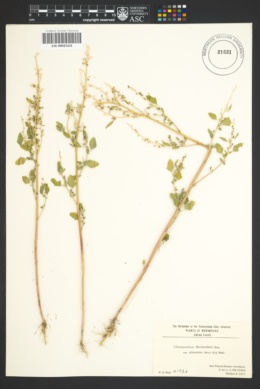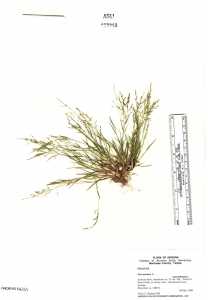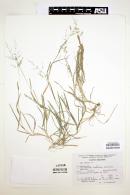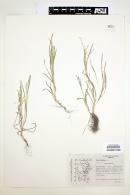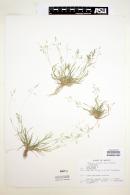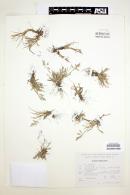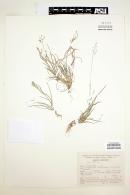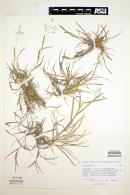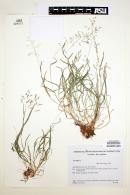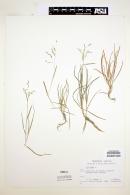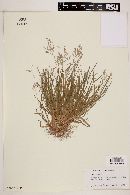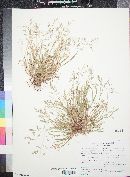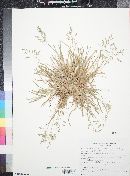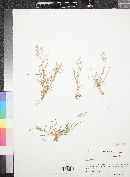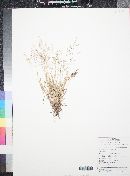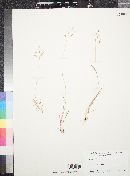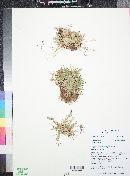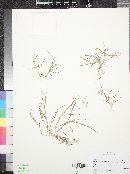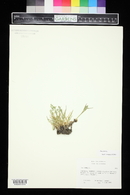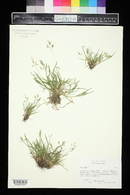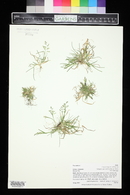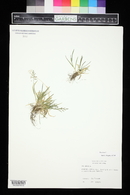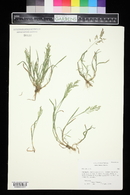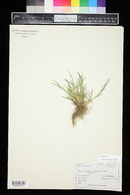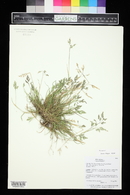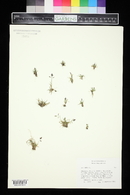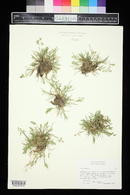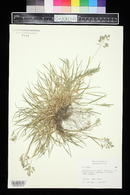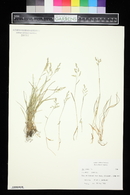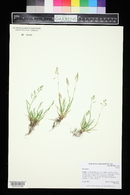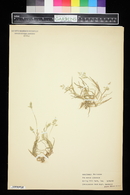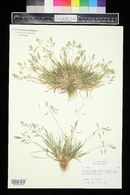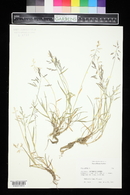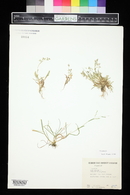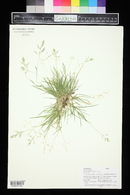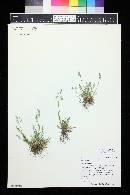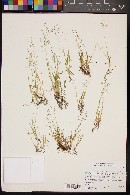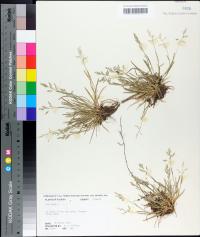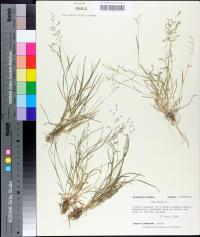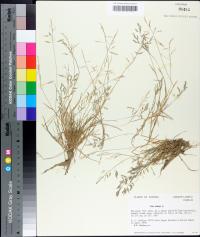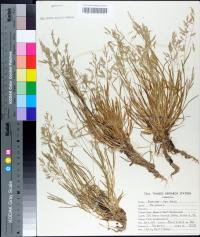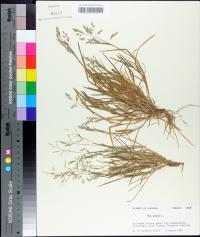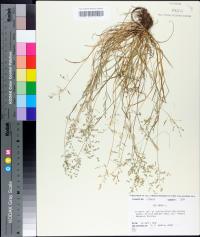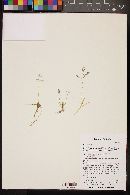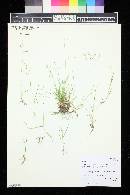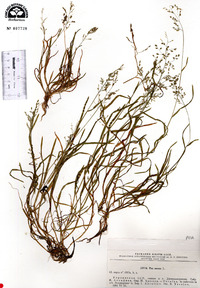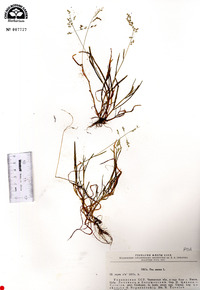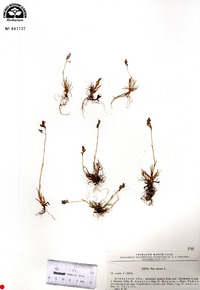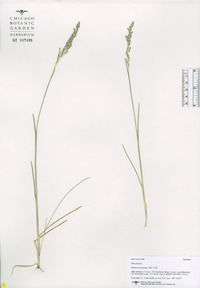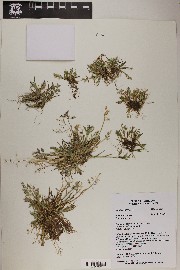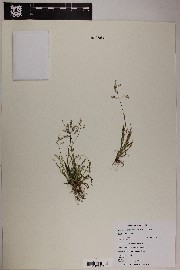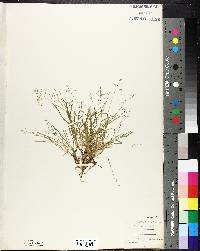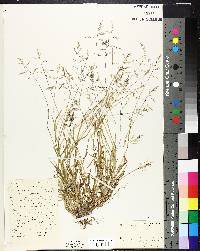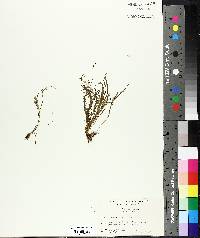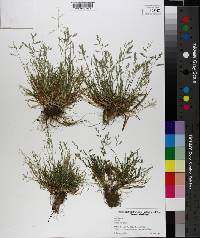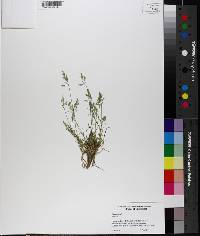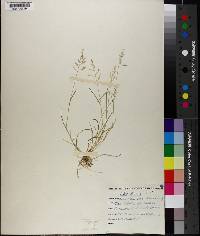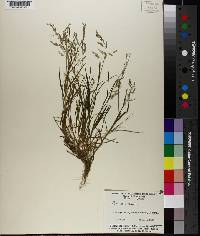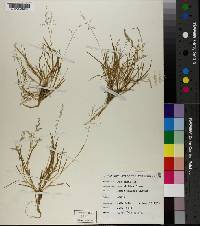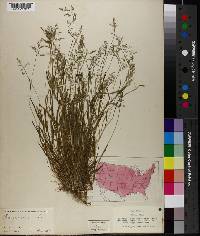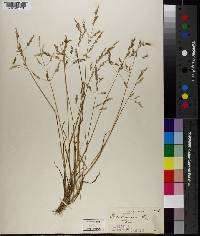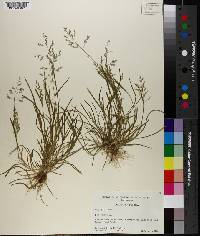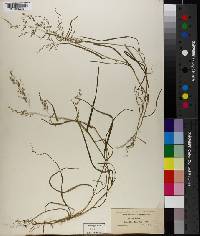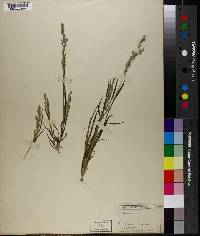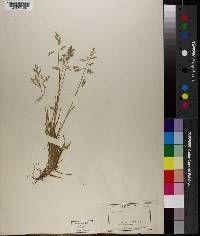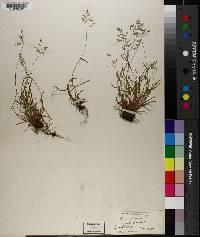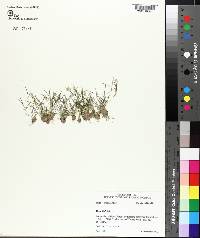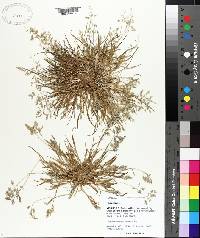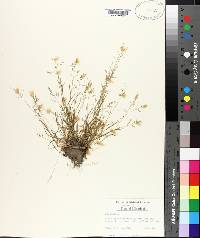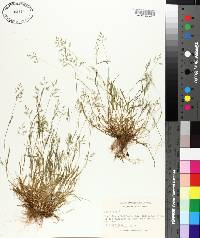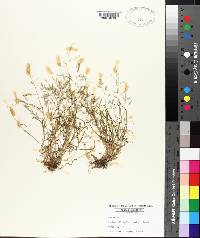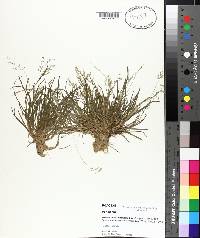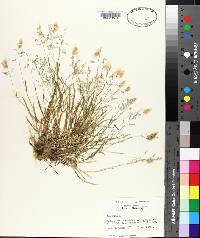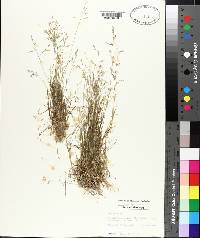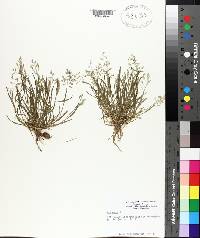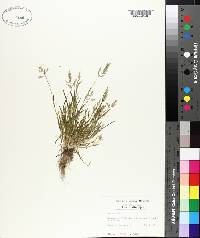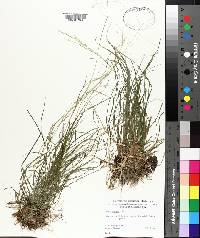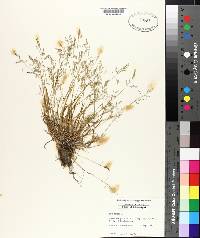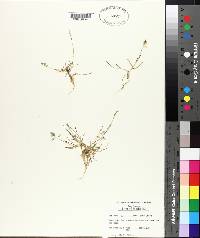
|
|
|
|
Family: Poaceae
Annual Blue Grass, more...walkgrass
[Aira pumila Pursh, moreCatabrosa pumila (Pursh) Roem. & Schult., Poa aestivalis J. Presl, Poa annua f. reptans (Hausskn.) T. Koyama, Poa annua var. aquatica Aschers., Poa annua var. eriolepis E. Desv., Poa annua var. reptans Hausskn., Poa bipollicaris Hochst., Poa puberula Steud.] |
Plants usually annual, rarely surviving for a second season; not rhizomatous, sometimes stoloniferous, densely tufted. Basal branching intravaginal, innovations common, similar to the culms. Culms 2–20(45) cm, prostrate to erect, slender; nodes terete, usually 1 exserted. Sheaths closed for about 1/3 their length, terete or weakly compressed, smooth; ligules 0.5–3(5) mm, smooth, glabrous, decurrent, obtuse to truncate; blades 1–10 cm long, 1–3(6) mm wide, flat or weakly folded, thin, soft, smooth, margins usually slightly scabrous, apices broadly prow-shaped. Panicles 1–7(10) cm, lengths 1.2–1.6 times widths, erect; nodes with 1–2(3) branches; branches ascending to spreading or reflexed, straight, terete, smooth, with crowded or loosely arranged spikelets. Spikelets 3–5 mm, laterally compressed; florets 2–6; rachilla internodes smooth, glabrous, concealed or exposed, distal internodes less than 1/2(3/4) the length of the distal lemma. Glumes smooth, distinctly keeled, keels smooth; lower glumes 1-veined; upper glumes shorter than or subequal to the lowest lemma; calluses glabrous; lemmas 2.5–4 mm, lanceolate, distinctly keeled, smooth throughout, the keels, marginal veins, and, usually, lateral veins crisply puberulent to long-villous, rarely glabrous throughout, lateral veins prominent, intercostal regions glabrous, margins smooth, glabrous, apices obtuse to acute; palea keels smooth, usually short- to long-villous, rarely glab-rous; anthers 0.6–1.1 mm, oblong prior to dehiscence, those of the upper 1–2 florets usually vestigial. 2n = 28.
Poa annua is one of the world’s most widespread weeds. It thrives in anthropomorphic habitats outside of the arctic. A native of Eurasia, it is now well established throughout most of the Flora region. Poa annua is a gynomonoecious tetraploid (possibly rarely polyhaploid), and is thought to have arisen from hybridization between P. infirma and P. supina (Tutin 1952). It is similar to P. infirma, differing in having larger anthers. It differs from P. chapmaniana in having glabrous calluses and three larger anthers, rather than one. Forms with glabrous lemmas occur sporadically within populations. FNA 2007, Gould 1988 Common Name: annual bluegrass Duration: Annual Nativity: Non-Native Lifeform: Graminoid General: Tufted annual grass, occasionally biennial; mat forming, stems erect to spreading, usually 5-20 cm tall; prostrate stems sometimes rooting at the lower nodes. Vegetative: Blades 1-4 mm wide, 2-8 cm long; soft, lax, the tips boat-shaped; sheath mostly open to just below the middle, margins overlapping; ligule smooth, thin and translucent, bluntly rounded, irregularly toothed, 1-3 mm long. Inflorescence: Panicle pyramidal, open, 3-7 cm long; spikelets 4 mm long, compressed, 3-6-flowered; lower glume 1.5-2 mm long, keeled; upper glume 2-2.5 mm long, keeled; lemma 5-nerved, pubescent on lower half of nerves, not webbed at base; disarticulation above the glumes, beneath the florets. Ecology: Widespread in open waste ground from 500-8,500 ft (152-2591 m); flowers May-October. Distribution: Widely distributed through much of the world and found on every continent; throughout N. Amer., in every Canadian province and US state; south through MEX to S. Amer. Notes: Distinguished by it being a prostrate annual; having multiple florets per spikelet, each floret with soft hairs; and the relatively wide blades with rounded tips. According to FNA, Poa annua is one of the world-s most widespread weeds. It thrives in anthropomorphic habitats outside of the arctic. A native of Eurasia, it is now well established throughout North America. Ethnobotany: Unknown, but other species in the genus have uses. Etymology: Poa is Greek for name for grass or pasturage; annua refers to the plant-s annual lifespan. Synonyms: Poa annua var. aquatica, P. annua var. reptans Editor: SBuckley 2010, FSCoburn 2015, AHazelton 2015 Tufted annual with few-several decumbent to ascending or seldom erect culms to 3 dm, sometimes rooting at the lower nodes; sheaths loose; blades soft, 2-3 mm wide; infl ovoid, 2-8 cm, with few ascending branches bearing rather crowded spikelets above the middle; spikelets green, 3-5 mm, 3-6-fld; glumes broadly lanceolate, acute, scarious-margined, indistinctly veined, the first 1.5-2.4 mm, the second 1.8-2.8 mm; lemmas thin, elliptic, 5-veined, obtuse, ±hairy on the veins only, not webbed, the lowest one 2.4-3.4 mm; anthers 0.8-1 mm; 2n=14, 28. Native of Eurasia; abundant in moist soil nearly throughout the U.S. and n. to Lab. and Alas.; often a lawn-weed. Gleason, Henry A. & Cronquist, Arthur J. 1991. Manual of vascular plants of northeastern United States and adjacent Canada. lxxv + 910 pp. ©The New York Botanical Garden. All rights reserved. Used by permission. From Flora of Indiana (1940) by Charles C. Deam This grass is found throughout the state in almost all sorts of habitats except in very wet places. It is most often found in lawns, gardens, orchards, and waste places about dwellings. It is, however, found in logging roads in dense woodland, in pastures, and along roadsides. …… Indiana Coefficient of Conservatism: C = null, non-native Wetland Indicator Status: FACU Deam (1929): This grass begins to flower about the middle of March in southern Indiana and continues throughout the summer, provided the season is wet enough. It will not stand drought, but it may be seen all summer in well watered lawns. |
|
|
|

